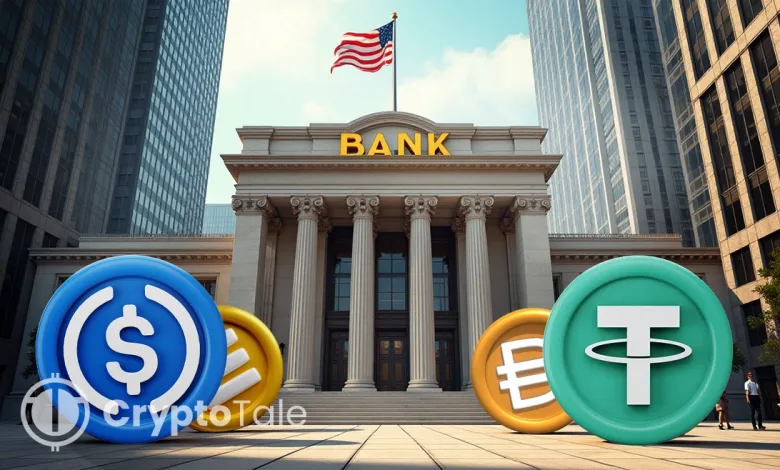Major U.S. Banks Discuss Launching Shared Stablecoin

- Major U.S. banks are exploring a joint stablecoin to modernize payments and retain market control.
- Discussions align with GENIUS Act progress, giving banks a clearer path to token issuance.
- Smaller banks are exploring their own stablecoin plans but may face regulatory and scaling issues.
Some of America’s biggest banks are discussing a new stablecoin initiative. The project could bring traditional finance deeper into the digital currency space, long dominated by crypto-native firms.
The early talks involve JPMorgan Chase, Bank of America, Citigroup, and Wells Fargo. These banks are exploring whether to collaborate on issuing a shared stablecoin. The proposal also includes Clearing House and Early Warning Services, two financial infrastructure firms jointly owned by these major banks.
The discussions are still in a conceptual stage and may evolve in the future. However, interest is growing as the U.S. Senate advances crypto legislation. A bipartisan bill, the GENIUS Act, recently passed a key vote. It aims to regulate stablecoins issued by banks and nonbanks alike.
The GENIUS Act introduces clear oversight, including reserve rules and anti-money laundering standards. It places stablecoin issuers under the Bank Secrecy Act. Bank executives see this as a green light for reentering the crypto space.
During an interview, Trump’s crypto adviser, David Sacks, said the bill could unlock trillions for the Treasury. He added that more than $200 billion in stablecoins already circulate unregulated. The bill seeks to change that by giving clear legal status to stablecoin projects.
Banks view stablecoins as a way to compete with tech firms and crypto platforms. A consortium-backed coin could modernize payments, especially cross-border transfers. It would also give banks more control over the future of digital dollars.
Stablecoins are digital tokens pegged to fiat currencies and backed by liquid assets. They help traders move funds quickly and cheaply between crypto assets. They also enable 24/7 settlements beyond the banking system’s hours.
Related: Hong Kong Launches Licensing Law for Stablecoin Issuers
To ensure broader adoption, one proposed model would make the stablecoin accessible beyond the core group of issuing banks. This would expand usage and drive adoption. Some smaller regional banks have considered launching their own version.
However, such efforts may face challenges in scaling and meeting new federal requirements. Large banks are now more confident they can comply with the GENIUS Act’s strict provisions. The renewed push marks a shift from 2022, when regulators cracked down on crypto ties.
At present, the banks are still months away from making any final decision. Still, momentum is building. If successful, this would be the biggest move by traditional banks into the crypto market to date.





